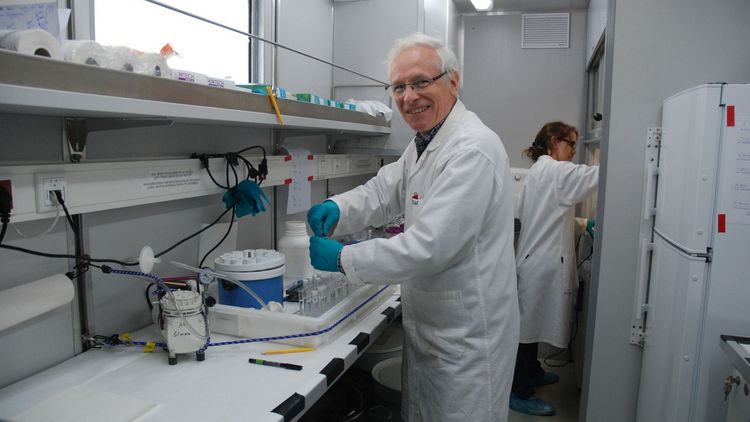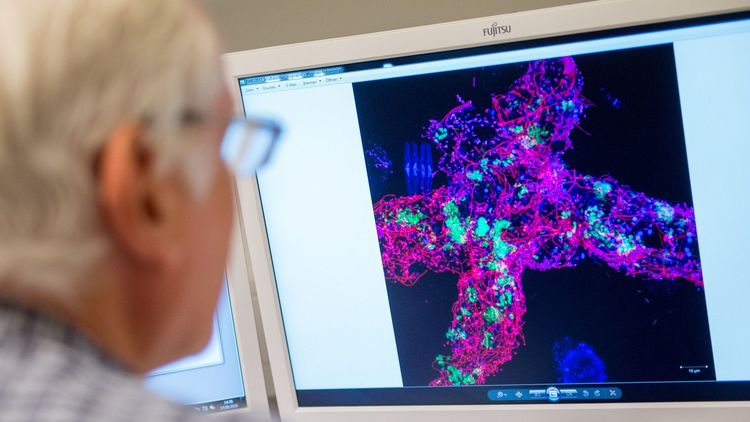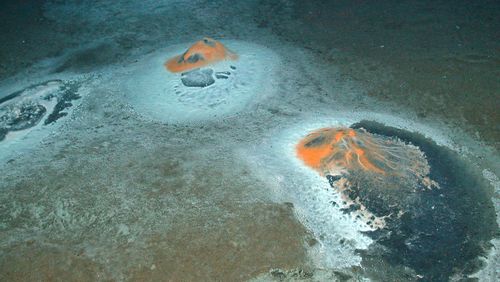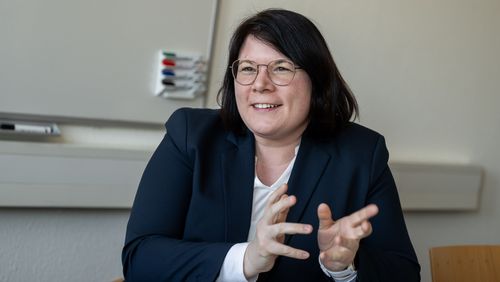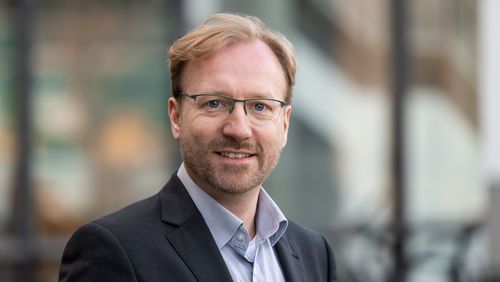The ocean microbiome
A group of bacteria lives in close association with other organisms throughout the world's oceans. Microbiologist Meinhard Simon and his team at the recently completed Collaborative Research Centre Roseobacter have spent 13 years investigating what makes these microbes so successful.
The sea is full of life. Even a thimbleful of water from the vastness of the ocean contains up to a million tiny creatures: Bacteria.
It is the size of these microscopic organisms that fascinates Prof. Dr Meinhard Simon: "Bacteria are the most abundant and diverse organisms." For the microbiologist, the interactions that microorganisms have with each other, with other living organisms and with their environment form "a world of its own". A finely woven world about which researchers now know much more than they did years ago, thanks in part to his work.
Simon, who was a professor at the university's Institute of Chemistry and Biology of the Marine Environment from 1997 to 2023, has been studying a particular part of the bacterial world for many years: the Roseobacter. These microbes play an important role in the global cycle of elements such as carbon, nitrogen and sulphur, for marine food webs and ultimately for our climate. From 2010 to 2022, the microbiologist is the spokesperson of a collaborative research centre funded by the German Research Foundation (DFG), in which more than 60 researchers from Oldenburg, Braunschweig, Göttingen and Bonn are working on these organisms, which are only a few thousandths of a millimetre in size.
A largely unknown group of bacteria
Simon and other researchers, such as Prof. Dr Irene Wagner-Döbler from the Technical University of Braunschweig and his Oldenburg colleague Prof. Dr Thorsten Brinkhoff, discovered the first representatives of Roseobacter by chance in the late 1990s and early 2000s in samples from very different regions of the world's oceans - from the North Sea to the Southern Ocean.
Until then, this group of bacteria had been largely unknown. This sparked the curiosity of the researchers: What makes the bacteria and their metabolism so special that they can adapt to such different environmental conditions? And how do Roseobacter fit into the web of life in the sea?
The researchers were able to carry out initial studies and even decode the genetic material of some species - a complex and expensive undertaking at the time. This preliminary work ultimately enabled the interdisciplinary team to obtain DFG funding for the Collaborative Research Centre in 2010.
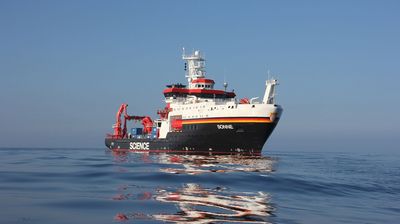
Extensive analysis of genetic diversity
13 years later, after several research cruises and countless hours in the laboratory, the consortium has "made a decisive contribution to finding out which groups of bacteria from the Roseobacter group are present in which oceans and what their functional role is for the turnover of substances in the oceans," says Simon with some pride. In total, almost 300 publications have been published and 80 PhDs have successfully defended their theses. In the end, the funding totalled around 32 million euros.
Thanks to rapid advances in molecular biology methods, the researchers have been able to analyse the genetic diversity of Roseobacter in greater detail than ever before: they have described new species and found out how they are adapted to the respective environmental conditions. They discovered that some Roseobacter live on solid surfaces, for example on bladderwrack, which is also common in the North Sea, or on crabs, and investigated which viruses infect the bacteria.
Interdependent microbial communities
A finding that Simon is particularly excited about is the close interaction between bacteria and their environment. For example, some microalgae, which use sunlight to convert carbon dioxide into biomass and release oxygen, only thrive in close association with Roseobacter, which provide the algae with vital trace elements such as vitamin B12.
At the same time, the Roseobacter depend on certain organic compounds that are excreted by the microalgae and broken down into smaller, more utilisable molecules by other bacteria. The microbial communities in the sea are ultimately as dependent on each other as humans are on their intestinal flora, says Simon. His conclusion: "The oceans also have their own microbiome".
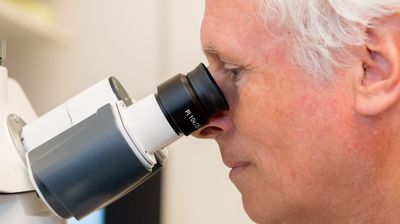
Better together
The coexistence of microbes in the world's oceans not only shows Simon how efficient these communities are in their ecological structure. For him, it also reflects something human: "A good community of experts is always better than a few people trying to do everything." Here, he also has the collaboration within the CRC consortium in mind, which Simon hopes will ultimately have an impact on future projects.
The fact that the CRC has been running for so long has also had a positive impact on the MSc in Microbiology and Marine Environmental Sciences, not least because of the existing research infrastructure and the multidisciplinary team. Students were able to participate in research projects at an early stage and complete their theses as part of the project. Some of them went on directly to their PhDs. "It was inspiring for everyone," says Simon.
Benefiting from the university
Despite his close involvement in research and teaching, the microbiologist also took on responsibility for the university as a whole as Vice President for Research and Transfer and Dean of Faculty V. For him, this was a matter of course: "The CRC has benefited enormously from the university, from the workshops, the administration, the presidential board and the faculty. You have to give something back. The position has been a valuable experience for him.
But Simon's lifeblood is research - even in retirement: there is still data, for example from the many research cruises, that he would like to analyse. And if the microbiologist gets the chance, he would love to go back to sea. For all his enthusiasm for the small and abstract, he is also fascinated by the "physical experience" of the marine environment - for example, the currents, the rough weather and the rich animal life in the Southern Ocean.
Topics
- Astronomy
- Biology
- Botanical garden
- Chemistry
- Computing Science
- Cooperations
- Covid
- Culture
- Dutch Studies
- Early Career
- Economics
- Educational Sciences
- Energy
- Energy Research
- Environmental Sciences
- Equal opportunities
- German Studies
- Graduate academy
- Health Services Research
- Higher Education Policy
- History
- Human Medicine
- International affairs
- Marine Sciences
- Material Culture
- Medical ethics
- Medical Physics and Acoustics
- Music
- Neuroscience
- People
- Philosophy
- Physics
- Presidential Board
- Psychology
- Research
- Slavic Studies
- Social Sciences
- Special Needs Education
- Sport Science
- Study Affairs
- Sustainability
- Teacher Education
- Theology
- Transfer
- University Medicine
- Ukraine
- Wind Physics

